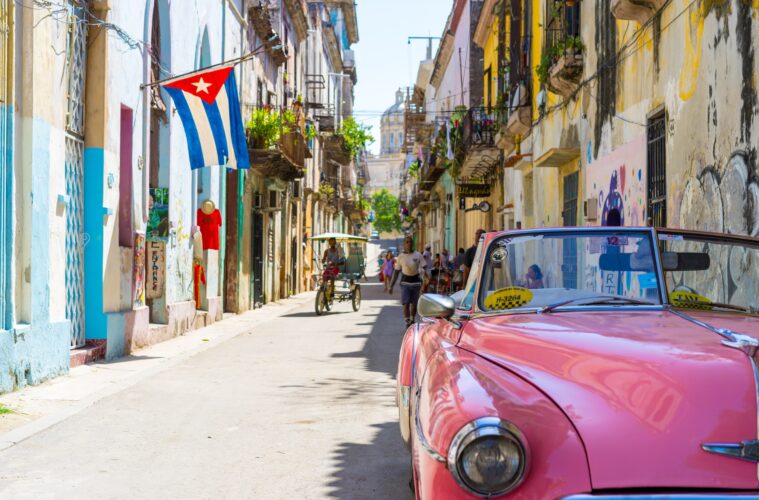Cuba, the captivating Caribbean gem, is a land of rich history, vibrant culture, and stunning natural beauty. From the rhythm of salsa music to the colourful streets of Havana and the pristine beaches that stretch along its coastline, Cuba offers a captivating experience for every traveller. But when is the best time to visit this enchanting island? In this article, we will delve into the various seasons and factors that influence the ideal time to explore Cuba, allowing you to make an informed decision and optimise your travel experience.
1. The Climate and Weather:
Cuba enjoys a tropical climate, with warm temperatures year-round. However, it is essential to consider the variations in temperature, humidity, and rainfall that occur throughout the year. Generally, Cuba has two distinct seasons: the dry season and the wet season.
a) Dry Season (November to April):
The dry season is the most popular time to visit Cuba, as it offers pleasant weather conditions and lower humidity levels. The months between November and April are characterised by mild temperatures, ranging from 21°C to 27°C (70°F to 80°F), making it an excellent time to explore the island’s cities, beaches, and cultural attractions. This period also coincides with Cuba’s peak tourist season, so be prepared for larger crowds and higher prices.
b) Wet Season (May to October):
The wet season in Cuba is characterised by higher temperatures, increased humidity, and a greater chance of rainfall. While the rainfall can be intense at times, it usually occurs in the form of short, tropical showers that quickly pass, allowing you to resume your activities. Despite the occasional rain, the wet season also has its advantages. The countryside bursts with lush greenery, and you can enjoy discounted prices, fewer crowds, and a more authentic experience, as you witness the island’s daily life unfold.
2. Festivals and Events:
Cuba is renowned for its vibrant cultural scene, and attending one of its numerous festivals can be an unforgettable experience. Consider the following festivals when planning your visit:
a) Havana International Jazz Festival (January):
Held in Havana, this world-class event attracts renowned musicians from around the globe, filling the city with soulful melodies and passionate rhythms.
b) Carnival (July):
Celebrated in various cities, including Havana and Santiago de Cuba, the Cuban Carnival is a dazzling display of colour, music, dance, and elaborate costumes. Join in the festivities and immerse yourself in the exuberant spirit of the island.
c) Festival del Habano (February):
For aficionados of cigars, this festival in Havana is a must-attend. Discover the art of hand-rolled cigars, attend seminars, and enjoy the company of fellow cigar enthusiasts from all corners of the world.
3. Beaches and Water Activities:
Cuba boasts some of the most breathtaking beaches in the Caribbean, and the warm, turquoise waters are perfect for water sports enthusiasts. Whether you are looking to snorkel, dive, or simply relax on the powdery white sands, the weather conditions and water temperature are crucial considerations.
The dry season, especially between December and March, offers ideal beach weather with calm waters and temperatures hovering around 25°C to 27°C (77°F to 80°F). During the wet season, while the occasional rain shower may interrupt beach time, you can still enjoy warm temperatures and indulge in water activities with average water temperatures around 28°C (82°F).
4. Nature and Wildlife:
Cuba is blessed with an abundance of natural wonders, from lush forests to sprawling national parks. To make the most of your nature explorations, consider the following:
a) Birdwatching:
Cuba is a bird lover’s paradise, with over 350 bird species, including the endangered Cuban Tody and the endemic Cuban Trogon. The best time for birdwatching is during the dry season when migratory birds arrive, adding to the diverse avian population.
b) Sea Turtle Nesting:
Witnessing the nesting and hatching of sea turtles is a remarkable experience. Various beaches, such as María La Gorda and Cayo Largo, offer opportunities to observe these awe-inspiring creatures. The nesting season typically occurs from May to October, making it an ideal time to witness this natural phenomenon.
The Best Time to Visit Cuba Conclusion:
Determining the best time to visit Cuba depends on your preferences, interests, and tolerance for heat or rain. The dry season, particularly from November to April, offers the most favorable weather conditions, but it also attracts more tourists. Alternatively, the wet season provides a unique perspective of Cuba, with lower prices and fewer crowds, although sporadic rainfall may occur.
Ultimately, Cuba is a destination that can be enjoyed throughout the year, with its rich cultural heritage, stunning landscapes, and warm hospitality. So, whether you choose to explore the vibrant streets of Havana, soak up the sun on pristine beaches, or embark on eco-adventures, this captivating island is sure to leave an indelible mark on your travel memories.



